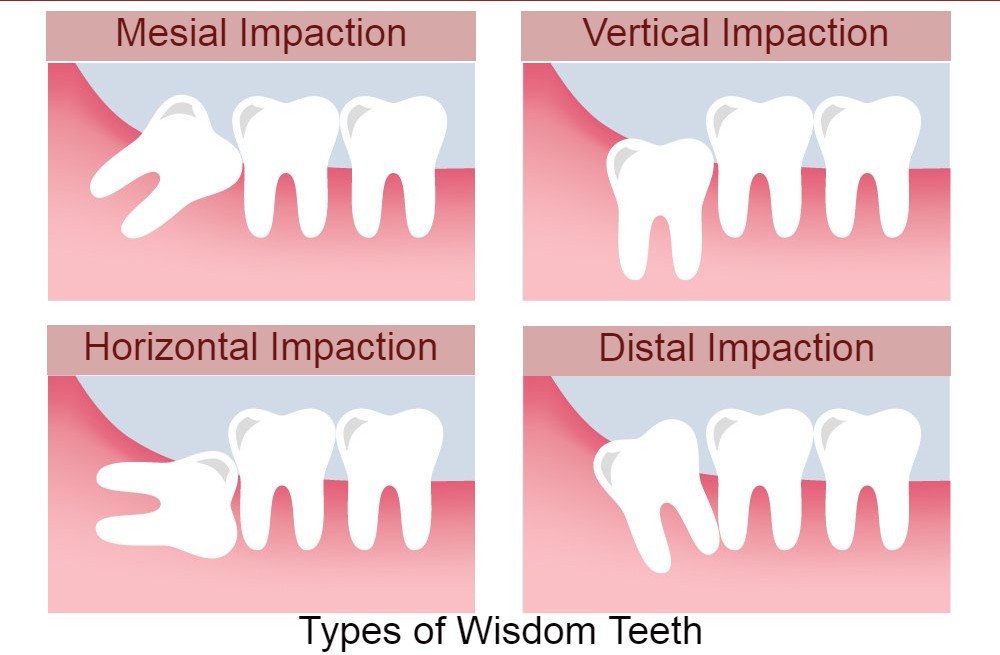
Posted On Nov 04 2020
WISDOM TOOTH AND ITS TANTRUMS!!!
OVERVIEW:
- “Wisdom doesn’t come easy” and does wisdom tooth.
- There are few lucky ones who gets wisdom easily without any tantrums.
- But tantrums and wisdom tooth come along hand in hand.
- They are called wisdom teeth because they erupt in later stage of life like late teen or early twenties.
- And believe me they don’t give any wisdom.
- Wisdom tooth also known as third molar are the last one to erupt in our oral cavity.
- After the eruption of the third molar you get the entire teeth set of 32 teeth.
- Until the last molar erupts there are just 28 teeth in our mouth.
- It is ideally said that the Wisdom tooth or the third molar erupts between the age of 18 years to 25 years.
- This might take longer but definitely not less than 18 years.
- The position of our wisdom tooth is at the last of the entire teeth set.
- As they are the last one to erupt in the arch, they don’t get enough space in our oral cavity to erupt.
- Because of lack of space their position differs in person to person or even from one side of the oral cavity to another side.
- If that is the case then there are number of symptoms that patient suffers from: Pain, Discomfort, Cheek biting, etc.
SIGNS AND SYMPTOMS:
- The main and most common complaint is:
- PAIN: Pain the jaw, pain through the neck area, pain in head.
- CHEEK BITING: if the position of the third molar is outside then the position of the other teeth it causes cheek biting.
- TRISMUS: also known as reduced mouth opening. Due to the last position of the tooth and due to pain, it indirectly affects the opening of the mouth.
- BAD BREATH/HALOTOSIS.
- METALLIC TASTE.
- SWELLING AROUND GUMS.
- PERICORONITIS.
CAUSES:
- The main reason for why this occurs is because of the position or because the wisdom teeth don’t get enough space to erupt.
- They are going to erupt as it is a natural process and so they disrupt the entire dentition for their eruption.
- Now there are chances that they don’t erupt but still they are present in our oral cavity and that too fully developed and so they would remain inside our gums and cause trouble.
- These molars that don’t erupt and remain inside gums are called as Impacted teeth.
- Impaction of the teeth could be Partial or Full.
- They might be in position such as:
- Horizontal
- Vertical
- Straight
- Mesial
- Distal
DIAGNOSIS:
- Firstly, according to the signs and symptoms of the patient the clinical diagnosis could be done.
- Then dental radiographs are taken to confirm the clinical diagnosis.
- Mostly the symptoms are classic for third molar teeth and can easily be rules out depending on those symptoms.
TREATMENT:
- If the third molar is fully erupted, then extraction is advised. Normal extraction can occur but due to the inadequate mouth opening and not appropriate visibility it might go under minor surgical extraction.
- If the third molar is impacted, then definitely surgery is performed.
- During the surgery a small cut on the gums around the tooth and then the tissue is retracted. Then the bone is slightly cut to reach to the tooth and then it is removed.
- The surgery might take an hour or one and a half hour to complete depending upon the position of the third molar.
- Firstly, the position in which the tooth is present be it fully erupted, partially erupted or impacted, is known in order to plan the surgery.
- If the third molar is fully erupted then then the surgery gets less intensive because the surgeon has crown to hold with the extraction forceps in order to pull the teeth out.
- But before that, an incision is made on the gingiva around the tooth buccally, then the tissue is pulled away from the third molar and the bone with the help of Periosteal Elevator.
- After the tissue is pulled, bone reduction is performed with the help of Bone cutting burs.
- Then with the use of extraction forceps and Elevators an access to the tooth is gained and then the tooth is pulled out.
- This procedure remains same for all the third molar extraction.
- For the impacted molar removal, the procedure is called as Disimpaction.
COMPLICATIONS:
- Decay- Due to the position of the tooth, the brushing or cleaning of the tooth becomes difficult which causes decay in the tooth.
- Damage to the adjacent teeth: the pressure of the third molar on the second molar causes decay or increased risk of infection in that tooth. It causes crowding in the teeth due to the pressure of the eruption of the third molar.
- Gum disease: mainly cause red and swollen gums.
- Cysts: for example: Dentigerous cyst. This is the cyst that occurs around the sac of the tooth especially the unerupted tooth. So, there might be chances for the unerupted or impacted third molar to cause Dentigerous cyst.


Comment